Anteprima
Categorie / Categories:
A) Lever and Pedal Harp soloists up to 15 years old by July 15th, 2018 / Solisti di arpa celtica e a pedali fino a 15 anni
Repertoire / Programma :
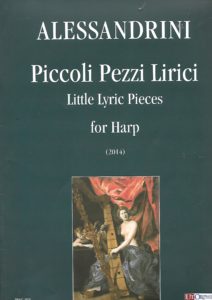

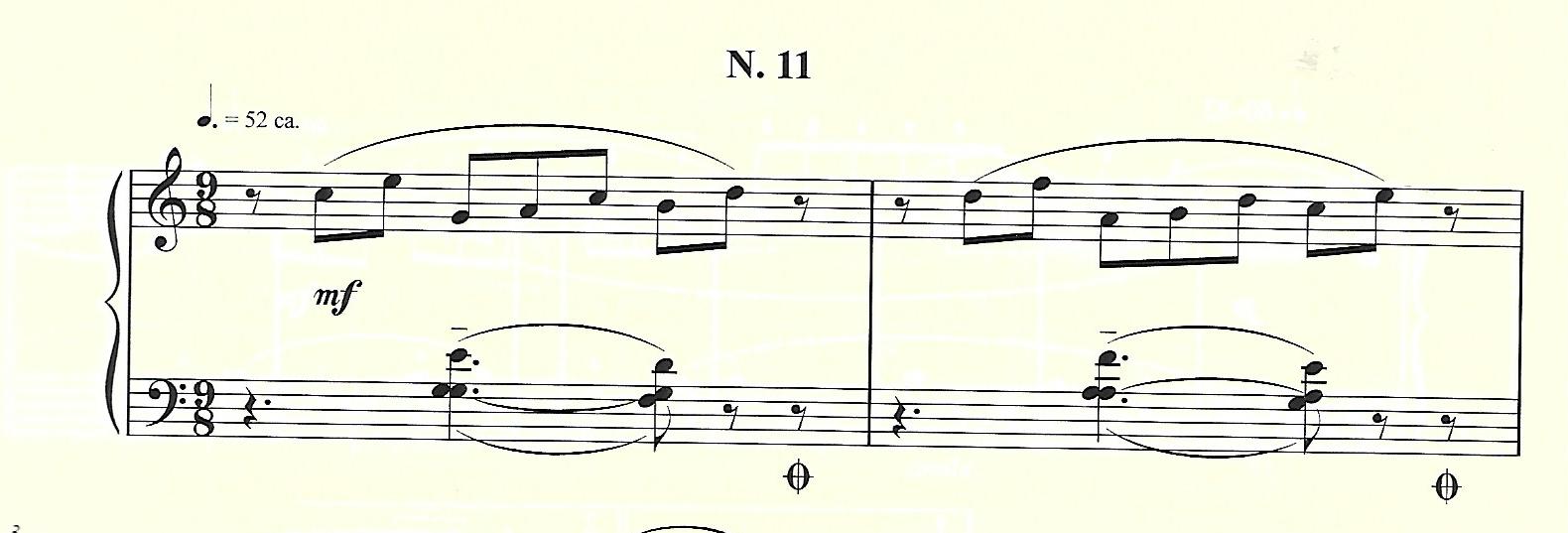
The Piccoli Pezzi Lirici for harp are thirteen expressive and tender pieces, composed by my father Giuseppe Alessandrini in 2014. As a pianist and composer, formerly teacher of composition at Verona Conservatory, and obviously stimulated by a harpist daughter, he often worked for this instrument and composed a large number of pieces both for solo harp and for harp and other instruments. The list of his compositions for harp is quite long, perhaps the longest amongst Italian contemporary composers: Solo for harp (1974), Sequenza ’77 for harp (1977), Piccola Suite for harp (1983), Flhar for flute and harp (1987), Une Fleur for violin and harp (1994), Une Fleur for two harps (1994), Sonata in three movements for harp (1998), 8 Pezzi facili for harp (2000), Flhar n. 2 for flute and harp (2001), Canone n. 2 for harp or harpsichord (2004).
Nevertheless, the thirteen pieces presented in this volume, were born not only thanks to the composer’s creativity but also to my specific request to have a didactic collection written in a modern musical language, which allows pupils to get in touch with an easy concept of singing, phrasing, and expression. Having been a harp teacher for more than thirty years, experience taught me that this instrument’s repertoire has both of these two features (modernity and lyricism), but always in different moments. Thus I asked my father to concentrate the musical experiences of composers such as Salzedo, Andres, Damase – for instance – on one hand, and the 19th Century masters like Bochsa, Thomas, Godefroid, on the other hand, within some easy and medium difficult pieces. (Roberta Alessandrini)
I Piccoli Pezzi Lirici per arpa sono tredici brani espressivi e sentimentali scritti nel 2014 da mio padre, il compositore Giuseppe Alessandrini. Egli è pianista e compositore, già docente di composizione presso il Conservatorio di Verona e, naturalmente sollecitato dal fatto di avere una figlia arpista, si è interessato a questo strumento componendo molto sia per sola arpa, che per arpa ed altri strumenti.
Il suo catalogo per arpa è già piuttosto numeroso, forse il più nutrito tra quello dei compositori italiani contemporanei: Solo per arpa (1974), Sequenza ’77 per arpa (1977), Piccola Suite per arpa (1983), Flhar per flauto e arpa (1987), Une Fleur per violino e arpa (1994), Une Fleur per due arpe (1994), Sonata in tre tempi per arpa (1998), 8 Pezzi facili per arpa (2000), Flhar n. 2 per flauto e arpa (2001), Canone n. 2 (moto retto) per arpa o clavicembalo (2004). I tredici pezzi raccolti in questo volume, però, nascono non solo dalla creatività del compositore ma anche da una mia precisa richiesta: quella di aver finalmente un’opera didattica scritta con linguaggio moderno che, allo stesso tempo, permettesse agli studenti di arpa di entrare in contatto con una facile idea di cantabilità, di fraseggio e di espressività.
Insegno l’arpa in conservatorio da più di trent’anni e l’esperienza mi ha insegnato che il repertorio di questo strumento sicuramente coglie questi due aspetti (modernità e liricità), solo però in momenti separati. L’invito rivolto a mio padre è stato quindi quello di concentrare in brani di facile e media difficoltà le esperienze dei vari Salzedo, Andres, Damase per esempio da una parte e degli ottocenteschi Bochsa, Thomas, Godefroid dall’altra. (Roberta Alessandrini)
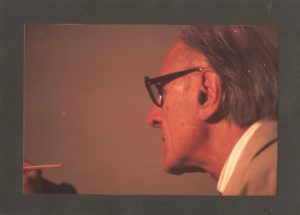
GIUSEPPE ALESSANDRINI (Sogliano Cavour (LE) 14 novembre 1923 – Verona, 26 ottobre 2016).
Graduated in Piano and in Band Instrumentation, he studied orchestra conducting with Paul Van Kempen at the Accademia Chigiana in Siena. He also studied with Franco Donatoni in Verona, and then graduated in Composition and in Choral Music and Choir Direction. His artistic path developed in different directions: he was composer, pianist, conductor and stage music director. He collaborated for many years with the Ente Lirico Arena di Verona and other Opera Theatres in Italy and Europe. He was also the conductor of the Verona City band: with this ensemble, in 1960 he won the first prize at the important International Contest for musical bands “Città di Merano”. Until 1994, he held the position of Professor of Composition at the “F. E. Dall’Abaco” Conservatory in Verona. His musical language was neoclassical at the beginning, but then reached corageous serial positions and evolved towards more advanced steps. His music is published by Bèrben, Ut Orpheus, Zanibon, Eridania, and recorded on LPs and CDs by several companies. He is mentioned as a composer by the Enciclopedia Italiana dei compositori contemporanei. Many of his articles and essays were published by cultural journals. In his compositions, written for different orchestral, chamber and choral ensembles, a particular attention is paid for piano, harp and wind instruments.
Diplomato in Pianoforte e in Strumentazione per Banda, frequenta corsi di direzione d’orchestra con Paul Van Kempen all’Accademia Chigiana di Siena. Studia a Verona con Franco Donatoni e si diploma quindi in Composizione e in Musica Corale e Direzione di Coro. La sua attività artistica si esplica in varie direzioni: è compositore, pianista e direttore d’orchestra, maestro di sala e direttore musicale di palcoscenico. Collabora per molti anni con l’Ente Lirico Arena di Verona e vari altri Teatri lirici italiani ed europei. Ha diretto inoltre la banda “Città di Verona”, portandola, tra gli altri successi, alla vittoria nel 1960 del primo premio all’importante Concorso Internazionale per bande musicali “Città di Merano”. È stato titolare fino al 1994 della cattedra di Armonia e Contrappunto presso il Conservatorio “F. E. Dall’Abaco” di Verona. Il suo linguaggio musicale, inizialmente neoclassico, raggiunge ardue posizioni seriali e si evolve poi verso fasi più avanzate. La sua musica è edita da Bèrben, Ut Orpheus, Zanibon, Eridania ed è stata incisa su LP e CD da varie case discografiche. La sua figura di compositore trova citazione nell’Enciclopedia Italiana dei compositori contemporanei. Suoi articoli e saggi di interesse musicale sono apparsi su diverse riviste letterarie. Nella sua opera compositiva, destinata a varie formazioni orchestrali, cameristiche e corali, una particolare attenzione è stata rivolta al pianoforte, all’arpa e agli strumenti a fiato.
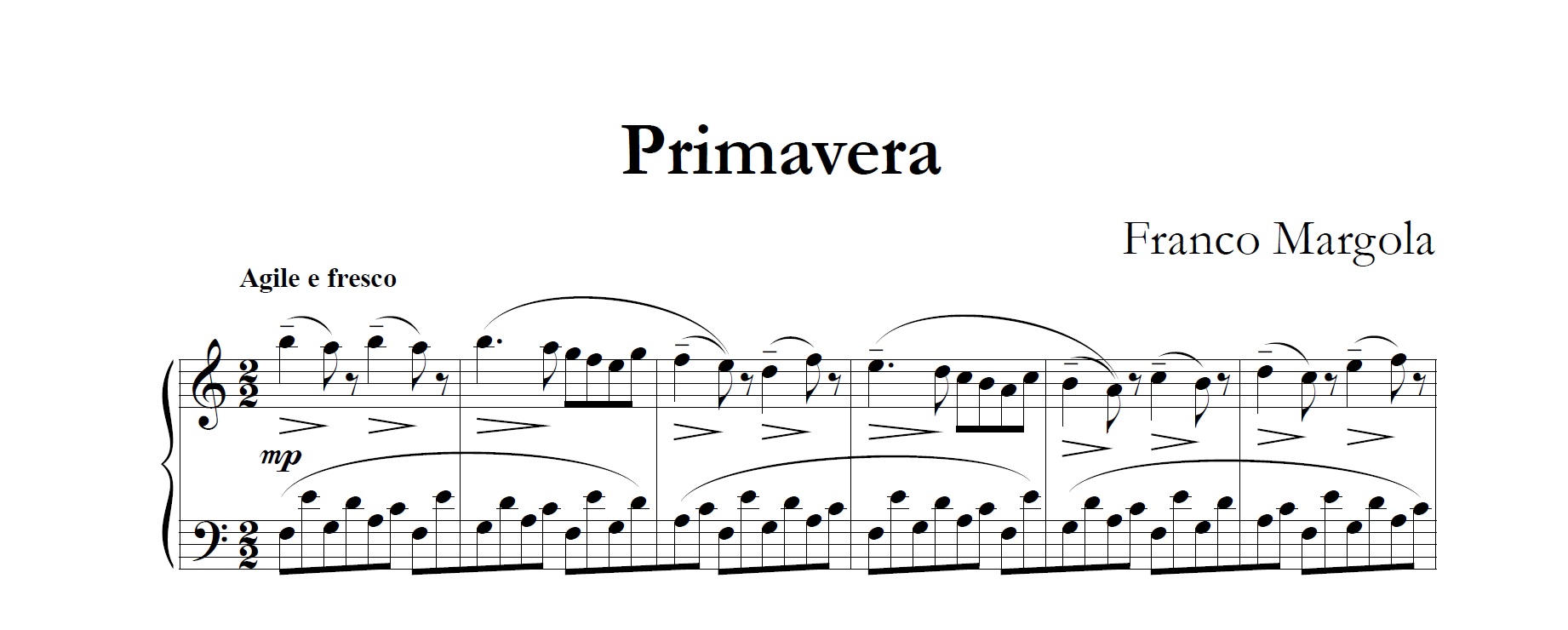
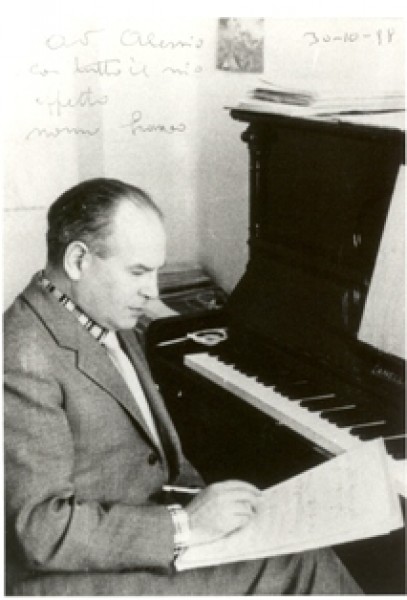
Franco Margola
https://it.wikipedia.org/wiki/Franco_Margola
https://en.wikipedia.org/wiki/Franco_Margola
B) Pedal Harp soloists up to 20 years old by July, 15th , 2018 / Solisti di arpa a pedali fino a 20 anni
Repertoire / Programma:
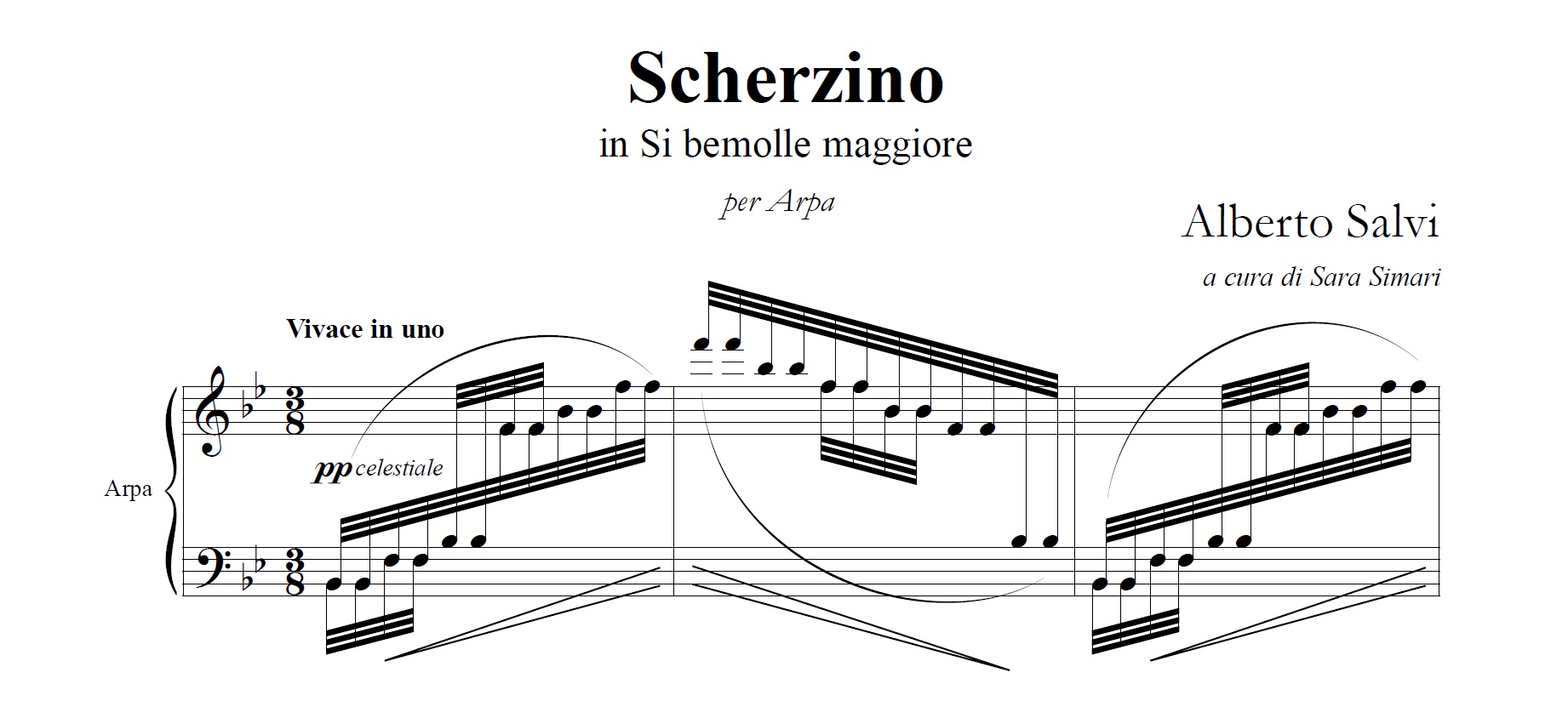
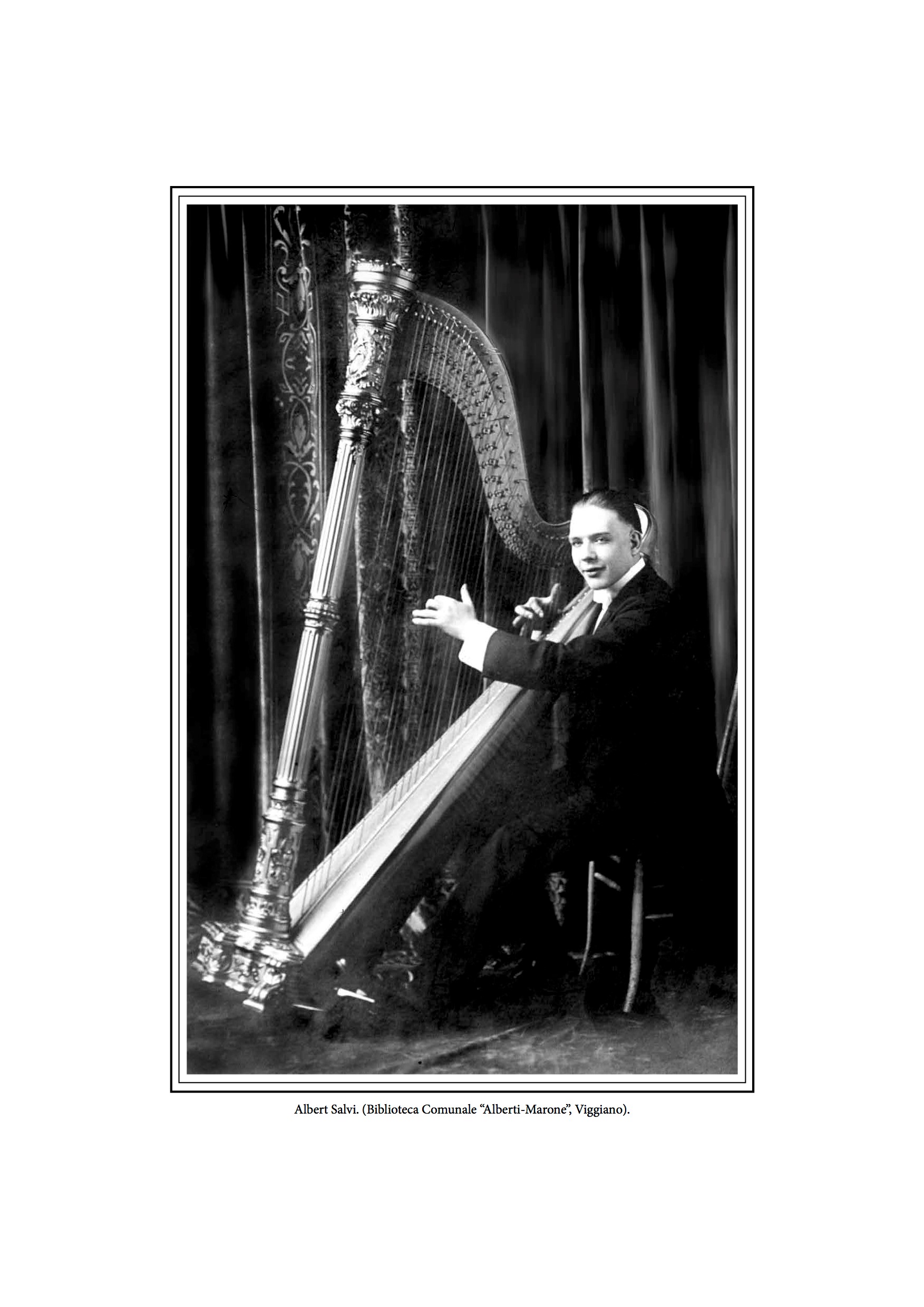
Introductory note by Sara Sìmari
Alberto Salvi is one of the very few harpists who can claim to have received recognition for their artistic merits while still alive. A plethora of illustrious critics have handed down to posterity descriptions of his amazing performances that earned epithets such as “Magician of the harp”, or “Paganini of the harp”. The famous pens of Fredrick Donahey, Maurice Rosenfeld (to name just two) in their columns in the most prestigious American newspapers, spoke of ”transcendental exhibitions”, “Salvi was capable of elevating his instrument to the highest levels of art”, “It seems that he has explored every expressive possibility of the harp and now possesses them completely”, “The volume of his sound is ample enough for four harpists rather than just one, yet his pianissimo is heavenly”, “Only in Paradise should I hear such harp playing”, “Alberto Salvi is capable of making his audience forget the harp and the harpist and think of an orchestra, a multitude of voices”. Born in Venice on 13th December 1893, the destiny of the young Alberto was marked by the family’s move to Viggiano, a small town in Southern Italy, near Napoli. A very active musical centre, particularly for the centuries’ old tradition of harp playing, Viggiano was an ideal place for Rodolfo Salvi, Alberto’s father, who transferred his lutherie workshop there and then dedicated his time to building and repairing pianofortes and harps. At 6 years of age, Alberto learnt the first rudiments of the harp from Vincenzo Pizzo of Viggiano, and then in 1907 , at only 13 years of age, he started his musical studies at the Royal Conservatory of Music “San Pietro a Majella”, in Napoli, under the authoritative guide of Giovanni Caramiello (1838 – 1938), one of the 19th Century’s most prestigious teachers of the harp. Alberto’s precocious and exceptional talent permitted him to complete his studies in only 5 years. Shortly after that he went to the United States where he soon proved himself to be one of the greatest harpists of the 20th Century. First harpist of the Metropolitan Theatre of New York and the NBC Orchestra of Chicago, he was a high-ranking concert performer to whom the world of harpists owes much more than has so far been given. He enchanted the audiences of the most prestigious theatres and his contribution was a determining factor in the affirmation of the harp as a solo instrument. Danse sacrée et Danse profane by Debussy, il Concertstuck by Pierné, the Introduction e Allegro by Ravel and the Concert in C by Zabel were among the first interpretations that Alberto Salvi performed in America, and he demonstrated to the public his rare sensibility and his elevated instrumental technique, within a vast repertoire. Alberto Salvi also understood how to embrace the opportunity offered by the nascent record industry, making memorable recordings with unique artists such as Enrico Caruso, Beniamino Gigli, Tito Schipa, Rosa Ponselle, Giuseppe de Luca, and Claudio Muzio. The considerable and constant frequentation of these different repertoires is inevitably reflected in the style of Alberto’s compositions for harp, and not only that. Unfortunately one must be aware of just how few of his works are accessible to the wider public. Among those works for harp, known up till now, are Italian Serenade, Valse de Concert, Fantasie in B Flat, Serenade, Scherzo in E Flat Minor, and the present Scherzino. Even in its brevity, Scherzino in Si b maggiore represents the synthesis between a strikingly melodious progression, with echoing bursts of Neapolitan songs and melodramatic arias, and an orchestral colour rich in tonalities. The piece is dedicated to another great Italian: “To my very dear colleague and teacher A. F. Pinto. Written for the Debut of his niece Anna Pinto at Carnegie Hall on 24th October 1921, with my most sincere best wishes for great success”. Alberto Salvi died in Chicago on 19th October 1983 performing until the very end of his life. When a little over 80 years of age, he did a brief tournée in Italy, wanting to see again Napoli and Viggiano, to which he had remained very attached all his life. To celebrate his 100th anniversary, in 1993, the Egans Records label, subsidised by Salvi Harps of Victor Salvi (Alberto’s brother), released a CD containing a restricted selection of phonographic registrations. This homage has allowed new generations to know and appreciate the magisterial technique and expression of this great harpist.
Nota Introduttiva a cura di Sara Sìmari
Pochi arpisti possono vantare, in vita, il riconoscimento dei propri meriti artistici come Alberto Salvi. Una pletora di illustri critici ha descritto e tramandato ai posteri le sue funamboliche esibizioni che gli sono valse appellativi quali, ad esempio, “Mago dell’arpa” o “Paganini dell’arpa”. Le accreditate penne di Fredrick Donahey, Maurice Rosenfeld (solo per citarne alcune), dalle colonne delle più prestigiose testate giornalistiche americane ci hanno riferito di esibizioni trascendentali: «Salvi è stato in grado di elevare il suo strumento al livello più alto dell’arte»; «Sembra che abbia esplorato tutte le possibilità espressive dell’arpa fino a possederle completamente»; «Il volume del suo suono è ampio per quattro arpisti invece di uno, eppure il suo pianissimo è etereo… »; «Solo in paradiso sentirò suonare una simile arpa»¸ «Alberto Salvi ha il potere di far dimenticare al suo pubblico arpa e arpista e di far pensare a orchestre, a moltitudini di voci».
Nato a Venezia il 13 Dicembre del 1893, il destino del giovanissimo Alberto viene segnato dal trasferimento della famiglia a Viggiano, paesino del Sud Italia a pochi chilometri da Napoli. Centro musicalmente vivace, in particolare per la secolare tradizione arpistica, Viggiano rappresenta il luogo ideale per Rodolfo Salvi padre, che vi trasferisce il proprio atelier di liuteria per dedicarsi prevalentemente alla costruzione e riparazione di pianoforti e arpe.
A sei anni Alberto Salvi apprende i primi rudimenti di arpa dal viggianese Vincenzo Pizzo e nel 1907, a soli tredici anni, accede agli studi musicali presso il Real Conservatorio di Musica “San Pietro a Majella” di Napoli; sotto l’autorevole guida di Giovanni Caramiello (1838 – 1938) docente di una delle Scuole di arpa più prestigiose dell’Ottocento. Il suo precoce ed eccezionale talento gli consentirà di terminare il percorso accademico in soli cinque anni. Trasferitosi da lì a poco negli Stati Uniti, non tardò ad affermarsi come uno dei più grandi arpisti del Novecento. Prima arpa del teatro Metropolitan di New York e dell’Orchestra della NBC di Chicago, fu concertista di rango cui il mondo dell’arpa deve molto di più di quanto non abbia già fatto; egli ha incantato le platee dei più prestigiosi teatri contribuendo in modo determinante all’affermazione dell’arpa quale strumento solista.
Tra i primissimi interpreti ad eseguire in America Danse sacrée et danse profane di Debussy, il Concertstück di Pierné, la Introduction et Allegro di Ravel, e il Concerto in C di Zabel, Alberto Salvi mostrò al pubblico la sua rara sensibilità e la sua eccelsa tecnica strumentale misurandosi con un repertorio vastissimo. Alberto Salvi sa anche cogliere l’opportunità offerta dalla nascente industria discografica consegnandoci memorabili registrazioni fonografiche con artisti unici quali Enrico Caruso, Beniamino Gigli, Tito Schipa , Rosa Ponselle, Giuseppe De Luca, Claudia Muzio. La considerevole e costante frequentazione di questi svariati repertori si riflette inevitabilmente nello stile delle sue composizioni per arpa e non solo; purtroppo bisogna constatare quanto siano ancora poche le sue opere accessibili al grande pubblico. Tra le opere per arpa finora conosciute vi sono Italian Serenade, Valse de Concert, Fantasie in B Flat, Serenade, Scherzo in E Flat Minor e il presente Scherzino. Pur nella sua brevità, lo Scherzino in Si b maggiore rappresenta la sintesi tra uno spiccato andamento melodico, in cui echeggiano sprazzi di canzoni napoletane e arie melodrammatiche, e un colore orchestrale ricco di sfumature. Il brano è dedicato ad un altro grande italiano: «Al mio carissimo collega maestro A. F. Pinto. Scritto per il Debutto della sua nipote Anna Pinto a Carnegie Hall, Oct. 24, – 1921, con i miei più sinceri auguri di grande successo».
Alberto Salvi si esibì fino alla fine dei suoi giorni, avvenuta a Chicago il 19 ottobre 1983. Poco più che ottantenne, tenne una breve tournée in Italia e volle rivedere Napoli e Viggiano cui rimase legato per tutta la vita. Per celebrarne il centesimo anniversario, nel 1993 l’etichetta discografica Egans Records, patrocinata dalla Salvi Harps di Victor Salvi – fratello di Alberto – pubblica in un CD una ristretta selezione di registrazioni fonografiche. Questo omaggio ha consentito alle nuove generazioni di conoscere ed apprezzare il magistero tecnico ed espressivo del grande arpista.
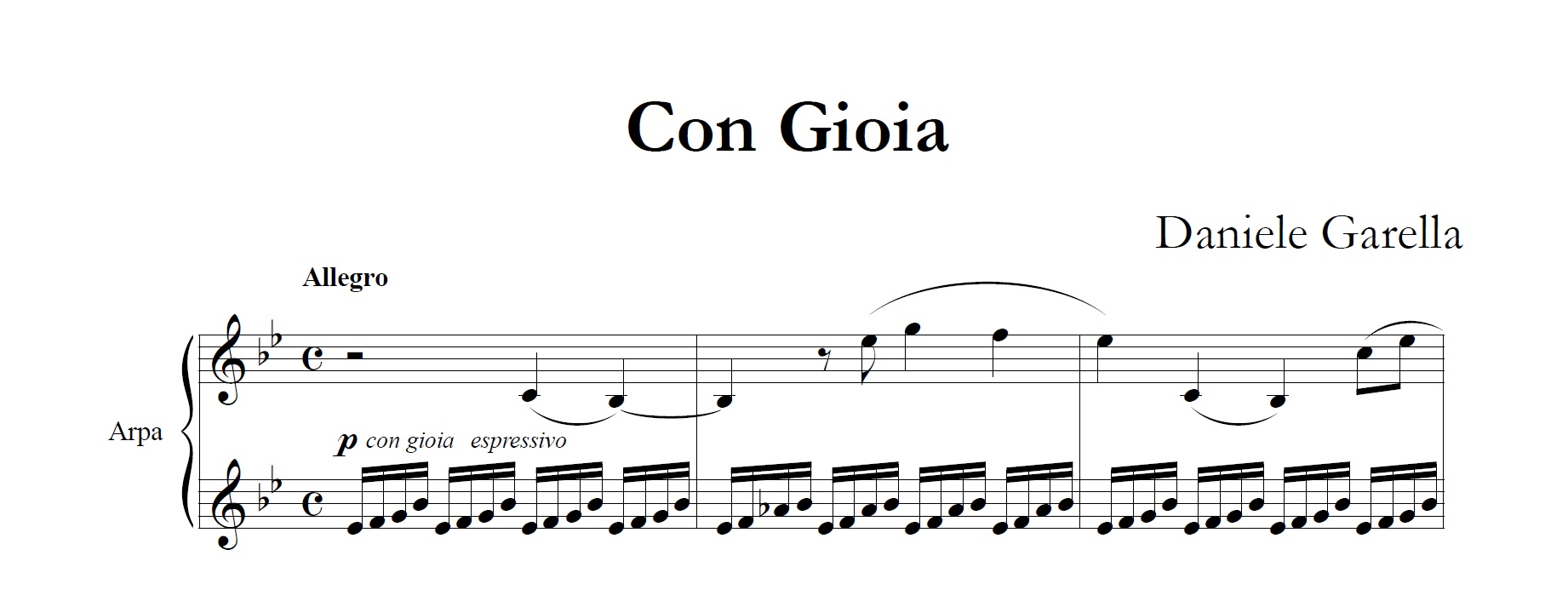
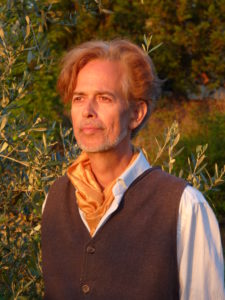
Daniele Garella
Daniele Garella was born in Florence, Italy (1961), where he received the Diploma in Harmony Counterpoint and Fugue (1987) and in Composition and Choral Conducting (1989) at the Conservatory Luigi Cherubini. His compositions have been performed all over the world. Since 1996 to 2005 Daniele Garella has been collaborating with the record company Oreade Music (nl), with whom he composed three different compact disks: Healing River (1996), The Healing Source (1997), Healing Music(1999). Each of these contain compositions performed by musicians coming from the Maggio Musicale Fiorentino and the Teatro alla Scala Orchestras. Together with other artists, among which Dulce Pontes, Pavarotti, Carreras, Celine Dion, Kitaro, Alan Parson Project, Vangelis, Era, Enigma, Andreas Vollenweider, Kitaro, Noa, he participated in the creation of 60 Cd compilations. Apart from Oreade Music, his work can be found on Cds by the following music publishers: Bmg-Sony International, Universal International, Arts (Germany), Azul Music (Brasil), Double Pro Music (Italy), New Sounds (Italy), San Pablo Media (Spain), Vivat (England), Ozella Music (Germany), Reader’s digest (Hungaria), Macro Edizioni (Italy). With Fenice (Italy) he edited three Cds: Alquimia (2007), Logos (2007), Aleph (2009), and with La Tosca (Italy) Laudate Lux (2011) and Le Jardin Féerique (2015). Daniele Garella has also a degree in Modern Literature at Florence University and he taught (1993–2013) History of Music at the Conservatoire Mascagni, in Leghorn. Daniele Garella has collaborated as a writer with numerous Italian publishing houses and has been awarded several nominations and prizes in a number of important literary competitions. He is also the Art director of Musica in Villa, a Festival of music, dance, theatre, held in the Chianti area, in Tuscany. The City Council of Florence organized, in the most important historical sites of Florence, many concerts entirely devoted to his music. (www.danielegarella.com)
Daniele Garella, compositore, scrittore e storico della musica, è nato a Firenze nel 1961, dove si è diplomato in Composizione e Direzione di Coro (Conservatorio L. Cherubini) e si è laureato in Lettere Moderne (Università degli Studi di Firenze). Dal 1993 al 2013 è stato docente al Conservatorio di Livorno. Come scrittore ha pubblicato saggi, articoli, sceneggiature e un romanzo storico, ha inoltre ricevuto riconoscimenti e premi in vari concorsi letterari. Organizzatore di eventi culturali, Daniele Garella è Direttore Artistico, dal 1994, del Festival Musica in Villa che si svolge nella regione del Chianti fiorentino. Come compositore, la musica di Daniele Garella è distribuita in tutto il mondo ed è attualmente presente in più di 60 Compact disc, assieme ad artisti di fama internazionale, quali, ad esempio, Alan Parson Project, Andreas Vollenweider, Noa, Pavarotti, Carreras, Celine Dion, Era, Enigma, Kitaro, Youssou N’Dour, Vangelis. Molti dei suoi brani sono disponibili in spartito editi da Stella Mattutina Edizioni. La musica di Daniele Garella, costantemente utilizzata in studi di psicoterapia, di musicoterapia, in centri yoga, shiatsu, in vari reparti ospedalieri, nei centri per la maternità, accompagna inoltre le immagini di video e film dedicati alla natura e alle terapie alternative.
C) Pedal Harp soloists up to 30 years old by July, 15th, 2018 / Solisti di arpa a pedali fino a 30 anni
Choose one:
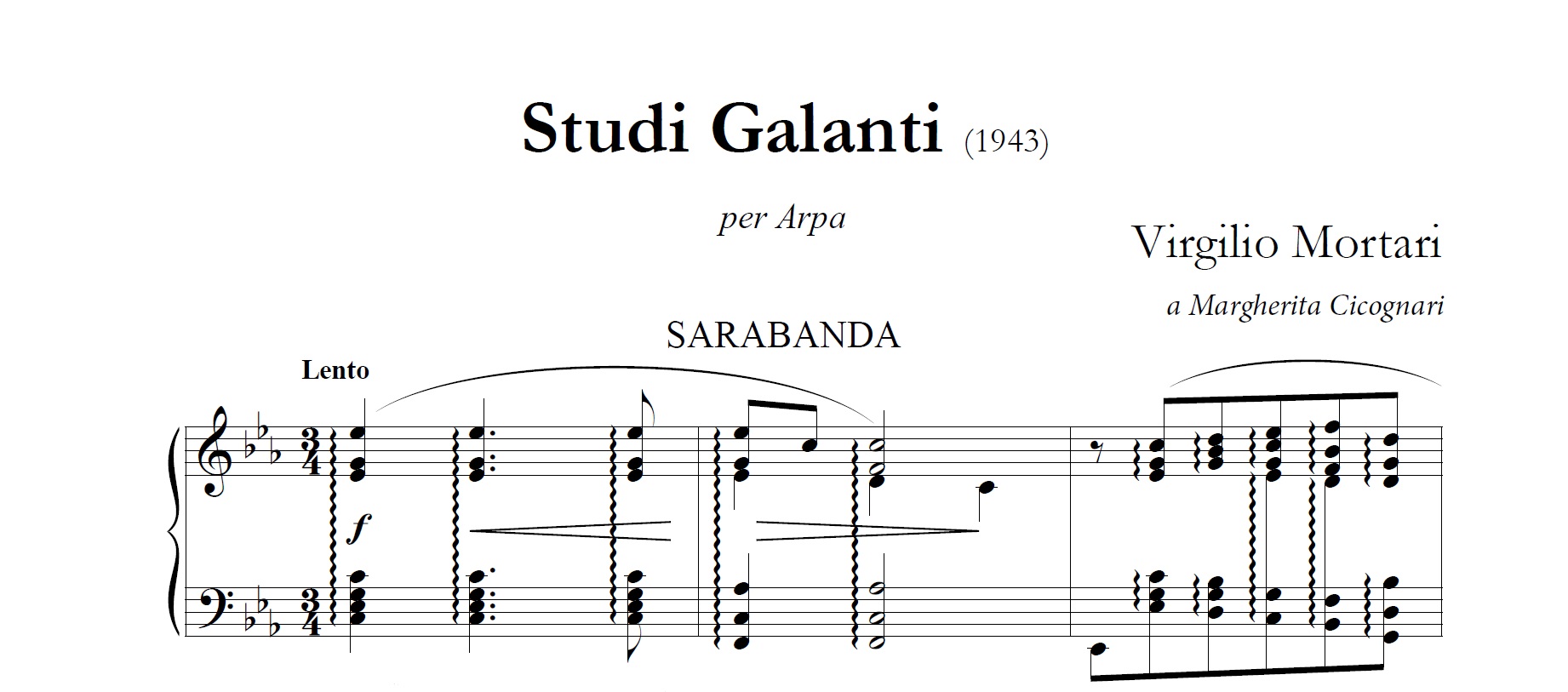
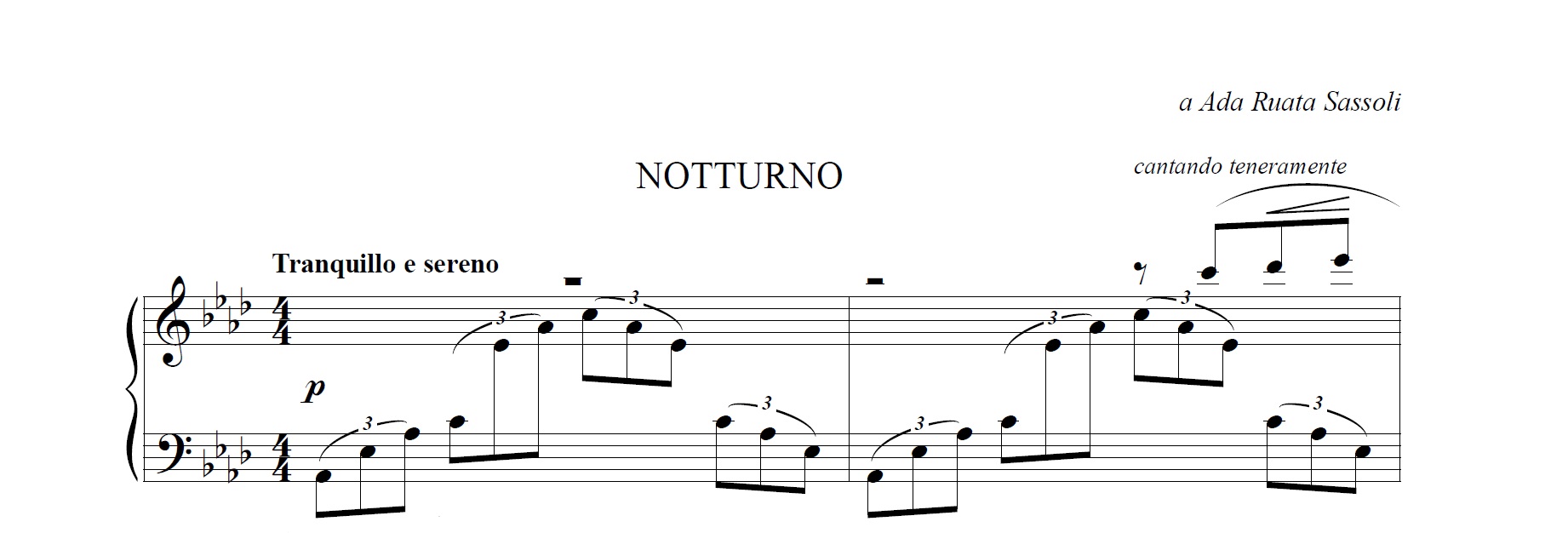
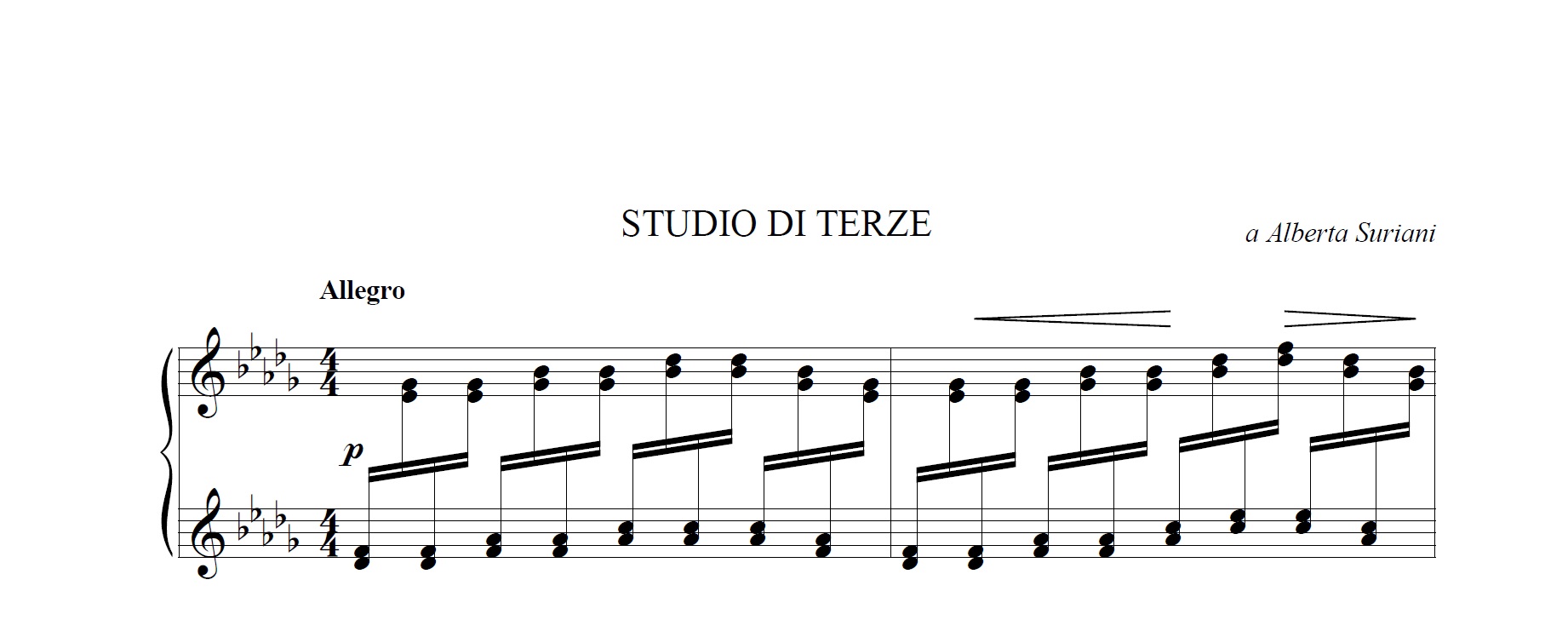
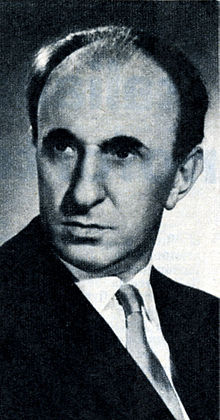
Virgilio Mortari
https://en.wikipedia.org/wiki/Virgilio_Mortari
https://it.wikipedia.org/wiki/Virgilio_Mortari
In the Home page you will find the complete programm of all categories, including cat.D.
Il programma completo di tutte le categorie, inclusa la D, è consultabile nella prima pagina di questo sito.